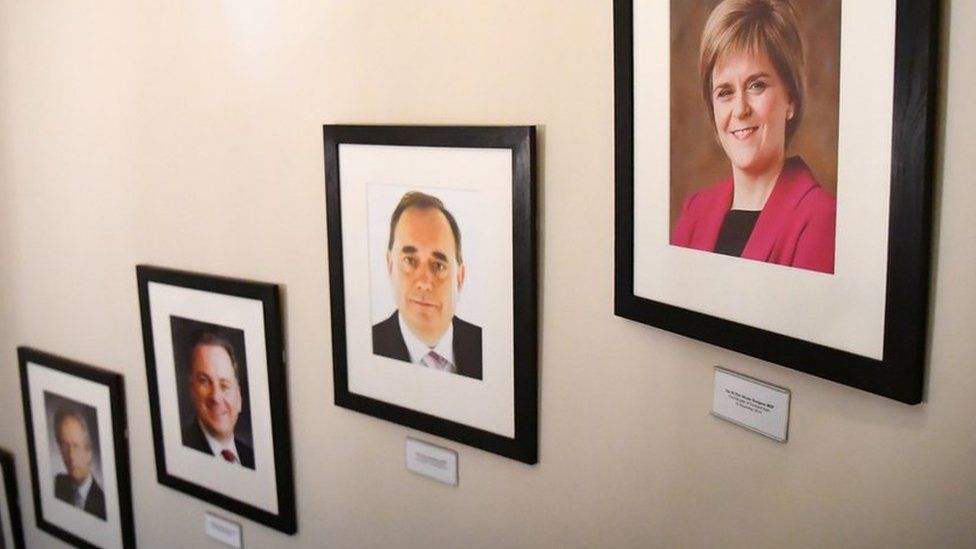ARTICLE AD BOX
 Image source, PA Media
Image source, PA Media
The winner of the race to succeed Nicola Sturgeon as leader of the SNP will be announced shortly after 14:00 on Monday.
The successful candidate will then face a vote in the Scottish Parliament on Tuesday before being confirmed as the country's sixth first minister.
So how will the two contests be decided?
Voting started in the SNP leadership election on 13 March, with Health Secretary Humza Yousaf, Finance Secretary Kate Forbes and former minister Ash Regan all standing.
Ballots were cast online using the Single Transferable Vote system.
Each party member - we now know there are about 72,000 rather than the 104,000 that the SNP had been claiming - was asked to rank the three candidates in order of preference.
They could, if they wish, only express a preference for one or two of the contenders.
If someone gets more than 50% of the first-preference votes, they have won.
Otherwise, whoever received the fewest votes is eliminated - with people who backed them having their vote transferred to their second choice candidate.
Whichever candidate has the highest number of votes after this has been done will be declared the winner.
The votes will be counted when the ballot closes at noon on Monday, with the result being announced two hours later by SNP national secretary Lorna Finn in front of an audience of about 300 people at Murrayfield Stadium in Edinburgh.
Ms Sturgeon will then formally inform the King of her intention to resign as first minister after more than eight years in the role.
On Tuesday, the new SNP leader will be nominated by MSPs to succeed Ms Sturgeon as first minister.
Any MSP from any party can also be nominated for first minister - there were seven candidates in 2003 - with Ms Sturgeon defeating then-Conservative leader Ruth Davidson in 2014, Lib Dem leader Willie Rennie in 2016 and both Mr Rennie and current Tory leader Douglas Ross in 2021.
After the nominees all make a brief speech in parliament, MSPs will vote for their preferred candidate.
A candidate must get more votes than all of their rivals combined in order to win.
If this does not happen, the contender with the least number of votes drops out and another round of voting is held.
This process continues until one candidate gets a majority of the votes cast.
The parliament's presiding officer - the equivalent of the Speaker in the House of Commons - will then recommend to the King that he appoints the winning candidate as first minister of Scotland.
Unless something truly remarkable happens, this will be the new SNP leader. In the extremely unlikely event that parliament cannot elect a first minister within 28 days, an election would be held.
Nicola Sturgeon was sworn in in a simple ceremony at the Court of Session in Edinburgh
The new first minister will be formally sworn in - probably on Wednesday - in a short ceremony at the Court of Session in Edinburgh.
They will take the "official declaration" or oath of office, with the court's Lord President also asking them to take another vow as Keeper of the Scottish Seal.
Finally, they will also make an oath of allegiance to the King.
The first minister is likely to start the process of appointing government ministers after they have been sworn in.
They will also become a member of the King's Privy Council group of advisors, and are likely to be invited for a private audience with the monarch.
On Thursday, they will face opposition leaders for the first time at the weekly First Minister's Questions session.

 1 year ago
16
1 year ago
16








 English (US)
English (US)